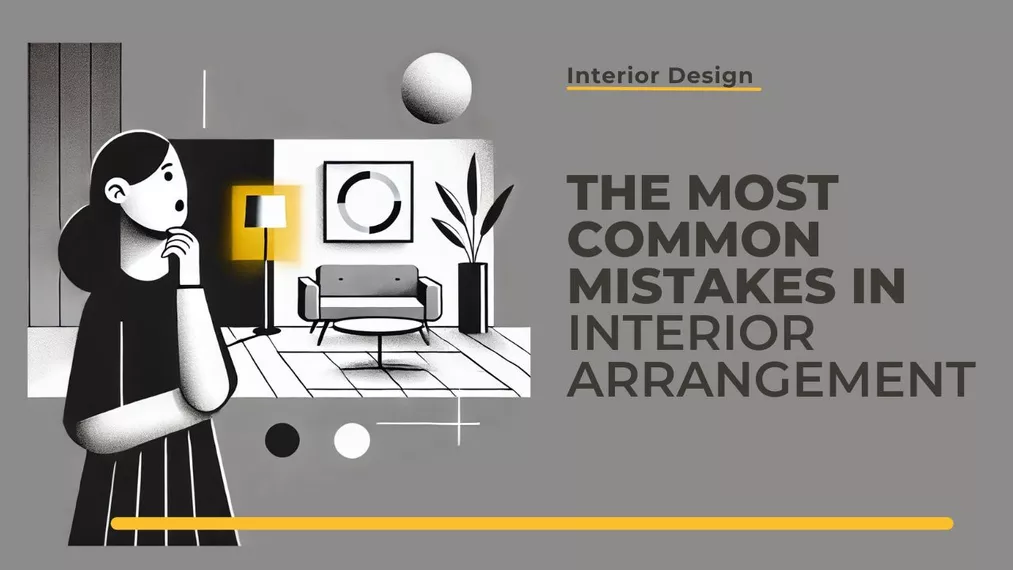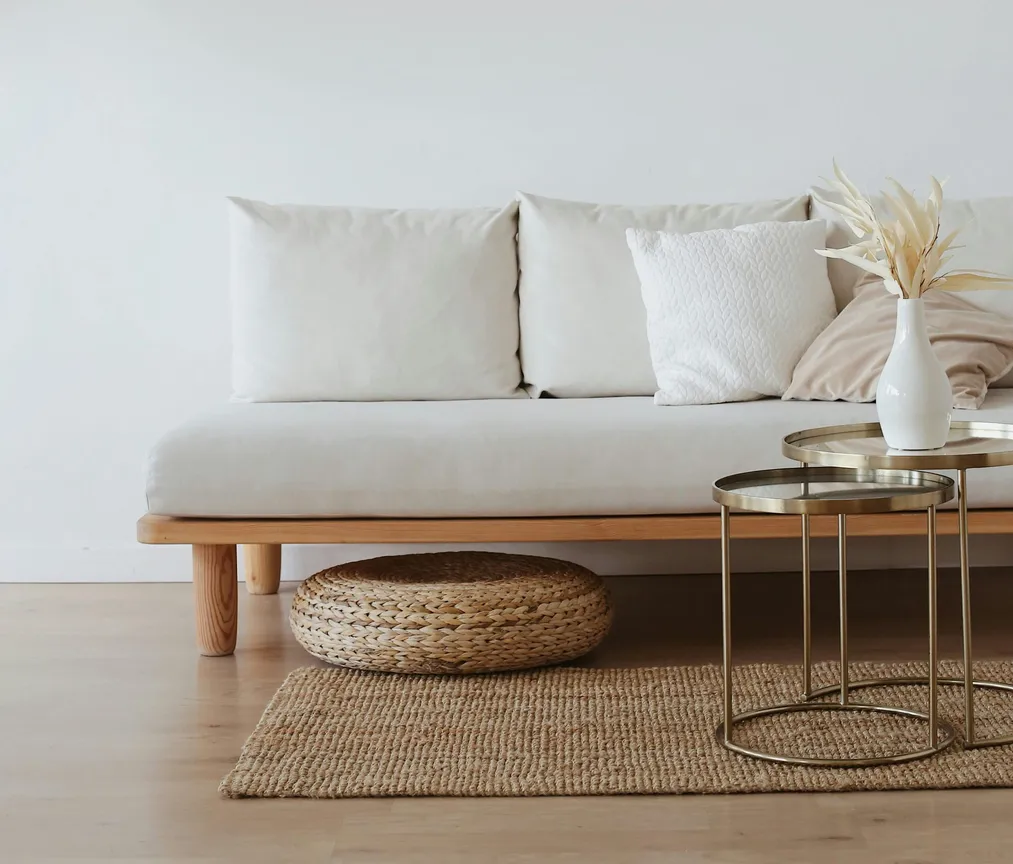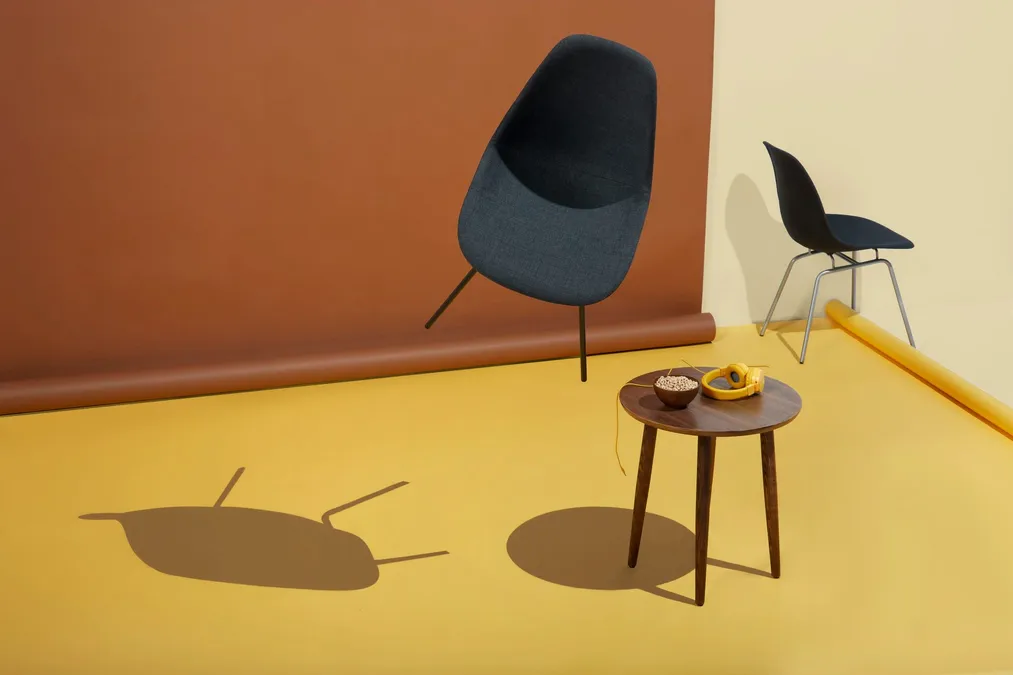Publication date: 04-02-2025 | Update date: 04-02-2025 | Author: Mateusz Ciećwierz
The most common mistakes in interior design and how to avoid them

Key takeaways:
- Excessive furniture and decorations can create visual chaos and limit the functionality of the interior.
- Inappropriate lighting affects the atmosphere of the room and its practicality.
- Incorrect color selection can optically reduce the space and lower usability comfort.
- Ignoring ergonomics leads to discomfort in daily functioning.
- Lack of cohesive stylistic concept results in a chaotic effect and disharmonious space.
Excessive furniture and decorations – when less means more
A common mistake made by interior designers is excessive use of elements. The desire to fill every space leads to overwhelming and limiting the functionality of the room. Too many decorations, accessories, or furniture make the interior lose spaciousness and lightness. Cluttered space makes it difficult to move around and excess decorations distract attention from key design elements.
How to avoid it? To avoid this mistake, it is advisable to apply the principle of minimalism - choose only functional furniture and a few well-chosen decorations. It is also important to ensure that the furniture does not block passages and does not limit the usable space. It is worth opting for concealed storage, such as cabinets with doors, to avoid clutter.
Lighting – a key element of interior ambiance
Mistakes related to lighting are among the most common and at the same time the easiest to avoid. Improperly selected sources of light can make the interior appear dull, too cold, or impractical. The lack of layered lighting often leads to uneven light distribution, leaving some areas of the room underlit.
How to avoid it? The best solution is to use several types of lighting: general, spot, and decorative. Warm light will work well in relaxation areas, such as the living room and bedroom, while cooler colors will be more suitable for the office and kitchen. Natural daylight should also not be forgotten, and it is worth supporting it with appropriate blinds or shades that will not limit its access.
Find out more: Lighting in interior design - what to pay attention to
Incorrect color selection – the impact of colors on space
Colors have a huge impact on how space is perceived. Incorrect color selection can optically reduce the room, making it feel claustrophobic. Dark shades on large surfaces can make the interior seem overwhelming and smaller than it actually is. On the other hand, an excess of bright colors can create a sense of chaos and strain the eyes.
How to avoid it? To create a pleasant interior, it is advisable to use light, neutral colors as a base, and introduce bold colors through easily replaceable accessories. Contrastive elements should be placed thoughtfully to not disrupt the harmony of the space.
Learn more about using colors in interiors and check out our article - Color in interior design - how to effectively choose color palettes
Ignoring ergonomics – comfort comes first
The aesthetics of the interior should not overshadow its functionality. Incorrect counter heights, poorly located electrical outlets, or impractical furniture arrangements can significantly reduce the comfort of using the room. Another common problem is the lack of adequate workspace in the kitchen or poorly planned placement of household appliances.
How to avoid it? The most important thing is to adjust counter and furniture heights to ergonomic standards. It is also important to provide adequate workspace and comfortable transitions between functional areas of the interior. Proper placement of electrical outlets, which should be located in places that provide comfortable use of appliances, is also crucial.
Lack of a cohesive stylistic concept – chaos instead of harmony
Combining too many styles in one interior without a clear concept can make the space inconsistent and chaotic. Another common mistake is copying trends without adapting them to the individual needs and preferences of the residents. As a result, the interior may look random and devoid of character.
How to avoid it? It is best to decide on one dominant design style and consistently stick to it. It is worth creating a mood board that will help maintain a consistent vision of the project. Proper proportions in the selection of patterns and colors will help achieve a harmonious effect.
Summary
Avoiding the most common mistakes in interior design allows for creating a functional and aesthetic space. Moderation in the selection of furniture and decorations, appropriate lighting, and a well-chosen color scheme are of key importance. It is also important to remember about ergonomics and maintaining stylistic coherence. Planning the design in line with your own needs will make the interior friendly and comfortable for everyday life.
Read on our blog
-
![How to use Nano Banana Pro and how much does it cost? A practical guide for beginners]()
How to use Nano Banana Pro and how much does it cost? A practical guide for beginners
Learn how to use Nano Banana Pro for free via Gemini, when it’s worth paying, and which solution will be best for you! -
![Artificial intelligence - AI - for furniture manufacturers - see what possibilities it offers!]()
Artificial intelligence - AI - for furniture manufacturers - see what possibilities it offers!
Discover the AI tools and workflows that enable creating packshots, material variants, and interior arrangements: in practice, step by step. -
![Alternative to AutoCAD - Discover GstarCAD with a Perpetual License]()
Alternative to AutoCAD - Discover GstarCAD with a Perpetual License
Looking for a cheaper alternative to AutoCAD? GstarCAD is a professional CAD tool that costs up to 5 times less. See what it offers! -
![What are the most common mistakes made in Archicad by beginners?]()
What are the most common mistakes made in Archicad by beginners?
Are you starting with Archicad? Find out which mistakes beginners most often make and how to avoid them to work more efficiently!





